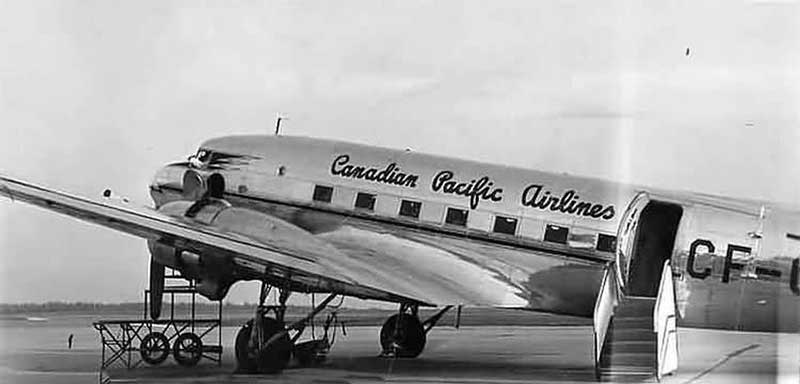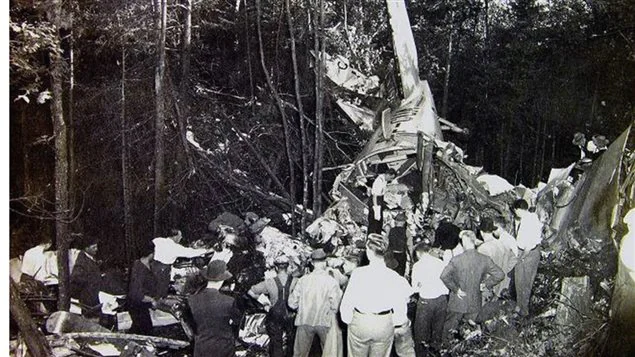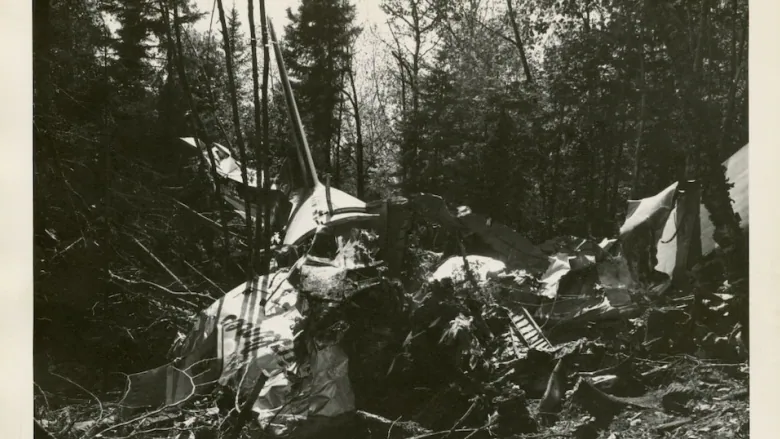
She might well have faded into history, as most working-class people do, were it not for an ill-fated friendship and a history-making murder half a world away.
That friendship was with Joseph-Albert Guay, a jewelry salesman in Quebec City. Guay was also a friend of Pitre’s brother, Générux Ruest.
Pitre, who ran a boarding house and was locally known as Madame le Corbeau (Madam Raven) because she always wore black, had a friendship so close to Guay that she considered herself like a mother to him.
Although married and a father, Guay began an affair with 17-year-old waitress Marie-Ange Robitaille in the summer of 1947. He courted her for more than a year, passing himself off as a single man to her parents.
But Guay’s wife Rita Morel learned of the affair in the fall of 1948 and told Robitaille’s parents, who kicked their daughter out of the house.
Robitaille alerted Guay to her plight and he called Pitre, who took in the young woman as a boarder.
Then followed an emotionally stormy winter and spring. Robitaille repeatedly tried to leave Guay, who violently forced her to stay. He stopped one attempt to flee to Montreal, then burnt her gloves, secured her coat and bit her on the face hoping she’d be too embarrassed to go out in public.
He had promised to divorce his wife and marry Robitaille, but divorce was difficult in Catholic Quebec. So, in April 1949, Guay decided that murder was the easiest way to end his marriage.
He was stymied in his first attempt. Guay offered a friend $500 to give his wife poisoned wine; the friend refused.
Suddenly inspiration struck. On May 7, a passenger aircraft crashed into the sea near the Philippines after a time bomb went off. It was the plot of an unhappy wife and several ex-con accomplices to eliminate a hapless husband—but another dozen people became collateral as they died in the crash.
It was the first recorded instance of civilian aircraft sabotage and it received sensational coverage in newspapers and radio broadcasts around the world. It spurred a Canadian copycat killer.
Investigators found residue of explosives in the forward cargo, focusing their attention on parcels.
Guay approached Ruest and Pitre to help him. Ruest was a clockmaker who agreed to build the bomb in exchange for a discount on a ring he wanted to buy. In exchange for her help, Guay wrote off a large debt owed to him by Pitre. She bought dynamite, batteries and an alarm clock for the bombing.
Pitre suggested targeting Guay’s wife in a land attack. They would enlist a taxi driver they knew to put the bomb in the trunk of his cab, and while driving Guay and his wife, the driver would pretend something had gone wrong with the engine. The two men would get out to investigate and the bomb would explode. But the owner of the taxi refused.
So, the air attack proceeded. Guay persuaded his wife to take the flight to Baie-Comeau, Que., on Sept. 9, 1949, to retrieve two suitcases containing stored jewelry.
Prior to the flight, a woman dressed in black dropped off a package for air delivery to Baie-Comeau. The package contained the bomb, carefully timed to go off when the aircraft was over water, as Guay believed all evidence would be destroyed. But the plane took off five minutes late and crashed on the north shore of the St. Lawrence River near Sault-au-Cochon.
All 23 on board—including four children—were killed; ironically, the body of Guay’s wife was the only one recognizable after the crash.

Pitre was soon identified.
Investigators’ ears perked up when Pitre said she’d been given the parcel by Guay, who they knew took out a $10,000 life insurance policy on his wife the day of the crash and tried to claim it two days later.
Guay, Ruest and Pitre were all tried for, and convicted of, murder and sentenced to hang.
“At least I die famous,” Guay said just before he was executed on Jan. 12, 1951. Ruest was crippled before his execution on July 25, 1952, and was hanged sitting down.
Pitre faced her execution drunk, singing a French drinking song.
“Your crime has no name,” said Judge Albert Sevigny, while sentencing Guay. It would be years before the term “terrorist” came into common usage.

Advertisement












